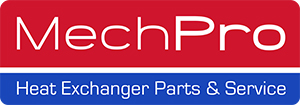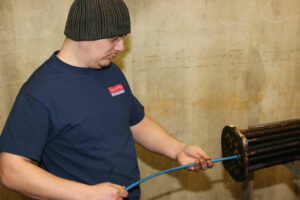“Chemical cleaning is as much an art as it is a science due to the wide variety of foulants.”
MechPro services include chemical cleaning and servicing of the metal components which are an integral part of both small and large scale heat exchangers.
The primary advantage of MechPro’s CIP process (cleaning-in-place) is that the metal components do not have to be dismantled and resassembled which signifcantly reduces downtime.
Metal components of heat exchangers will become corroded from both organic and inorganic deposits which buildup over time. The contaminants typically are removed in 5 step process, although this can vary depending on the nature and degree of scale.
Inorganic scale is usually calcium or iron based. Organic contaminants include slime and algae found in cooling water circuits, animal fats and mineral oils, denatured product, hydrocarbons, polymers and coke formed during various process streams.
The 5 basic steps of MechPro’s industrial standard process include:
1. Cleaning with Alkali – caustic soda (NaOH) is used to remove substances such as fats and oils which are converted to glycerol and soap.
2. Rinsing – deposits are loosened and washed away along with the alkali.
3. Cleaning with Acid – the choice and concentration of acid is job specific (HCl most common) to remove any ionic deposits from the metal.
4. Rinsing – as before, rinsing loosens deposits and removes residual cleaning agents to prepare the equipment for the next stage.
5. Passifying with Alkali – the cleaned metal is in a highly reactive state. Using a hot alkali solution the metal must be coated with a protective iron oxide layer to prevent corrosion.
CIP Methods of System Flushing:
- Recirculating Flush – single batch, high pressure flush to remove debris and water impurities
- Velocity Flush – rapid flow to scour foreign material from internal surfaces which is trapped of filtered out.
- Soaking Method – used when inlet connections prevent prevent flow by Recirculating method.
- Acid Cleaning – internal surfaces of water touched parts cleansed of mill scale and rust.
- Chemical Cleaning – hot alkaline water or citric acid solution used to remove contaminants. Followed by acid flush and passifying alkali flush.
The scale which was deposited on the heat exchanger’s metal components is typically washed away as dissolved ions along with neutralized acid ions both of which are harmless to the environment, enabling the heat exchanger to operate efficiently once again.

